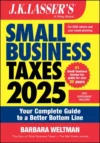RMDs in 2020: What You Need to Know
As a result of COVID-19, required minimum distributions (RMDs) have been suspended for 2020. The IRS has provided guidance on how to deal with this suspension (Notice 2020-51). Here are some of the ramifications of the RMD suspension.
Returning RMDs
If you took an RMD for 2020 because you thought you had to, you’re permitted to return the funds to the account. Usually, there’s a 60-day rollover period, but the IRS has extended this to August 31, 2020. Thus, if you took what you thought was the necessary RMD for 2020 in January of 2020, you have until the end of August to put it back and avoid tax on the distribution. This rollover option also applies to those whose first RMD was for 2019 and postponed it until April 1, 2020.
Distributions can be rolled back to the same plan as long as the plan permits it.
Impact on the 5-year rule
Beneficiaries who are taking required minimum distributions under the 5-year rule have one extra year (2020 is just ignored). Also, those who want to use the 5-year rule for an owner who died in 2019 have until the end of 2021 to elect this rule (normally the deadline would have been December 31, 2020).
Required beginning date
The suspension of RMDs for 2020 does not change an individual’s required beginning date. Remember that the SECURE Act increased the age at which an employee or IRA owner must commence RMDs. For those who attain age 70½ after 2019, the required beginning date is referenced to age 72. For those who were 70½ before 2020, the date continues to be age 70½. Usually, the first RMD must be taken by the end of the year in which the required beginning date is attained. But the first distribution can be postponed until April 1 of the following year, with the second RMD taken by the end of that year.
The waiver for 2020 RMDs applies regardless of whether the employee’s required beginning date is April 1, 2021. For example, if an employee attained age 70½ before January 1, 2020, and retires in the 2020 calendar year, that employee’s required beginning date is April 1, 2021. The employee is not required to receive an RMD for 2020 before April 1, 2021, but must still receive the RMD for the 2021 calendar year by December 31, 2021.
Taking distributions in 2020
The suspension of RMDs for 2020 doesn’t prevent you from tapping your 401(k) plan or IRA if you need the money; you just aren’t required to do so for 2020. However, employers are barred from the mandatory 20% withholding on eligible rollover distributions. For example, if a plan makes a distribution in 2020 to a retiree of her entire account balance under the plan and part of the distribution is a 2020 RMD, the portion of the distribution that is not a 2020 RMD is an eligible rollover distribution and is subject to the 20% mandatory withholding rules. The portion of the distribution that is a 2020 RMD is not an eligible rollover distribution for purposes of 20% mandatory withholding and is subject to the 10% optional withholding rules.
Conclusion
This is the year of the pandemic and it means special tax rules for RMDs. They are limited to 2020 unless Congress extends or expands them. Understanding the rules can help you take actions now and report transactions correctly on 2020 returns filed in the 2021 filing season.
Sources: Notice 2020-51 https://www.irs.gov/pub/irs-drop/n-20-51.pdf



